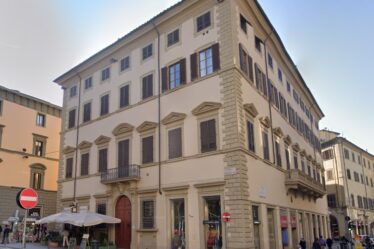

In the vibrant heart of Florence during the late 19th century, a remarkable innovation sparked change and set Italy on the path toward modern mobility: Electric Tramway Revolution Begins. This article explores the fascinating story behind Italy’s first electric tramway, a Florence-Fiesole line that forever transformed how Italians thought about transportation. Through steam, sparks, and celebration, this revolutionary system connected the city center with the scenic hilltop town of Fiesole and inspired a nationwide wave of electric innovation.
From Steam to Sparks
Before electricity illuminated the future of transport, Florence experimented with steam power. In May 1886, a steam tram began operating between the Barriera delle Cure and the Convent of San Domenico. However, the venture faced setbacks. By 1887, its concession holder, Archieri, lost all rights to the tramway due to nonpayment of a mortgage installment, as ruled by the Commercial Court of Genoa. Lacking the means and will to manage the tramway, the financial institution Cassa quickly sold it to Emanuele Orazio Fenzi, a Florentine banker and manager of the Chianti Tramway.
The steam-powered service continued for four years, until September 18, 1890, when the transformation was complete: the tracks had been replaced, overhead electric lines installed, and buildings reinforced with metal anchors for the new system. It was the dawn of a new electric age.
Embracing the Electric Future
The rebirth of the Florence-Fiesole line as an electric interurban tramway marked a critical moment in technological progress. Engineers chose the Sprague system for electric traction, proven highly effective since 1888 in Richmond, Virginia, a city whose hilly terrain mirrored that of Florence—especially on the challenging San Domenico–Fiesole section.
Testing began in August 1890, overseen by Engineer Wermore on behalf of Frank Sprague. Florence imported powerful two-axle electric motors from Schweizerische Lokomotiv Maschinenfabrik (SLM) in Winterthur, Zurich, each delivering 33 kW and capable of reaching 20 km/h. The initials S.L.M. earned these trams the Florentine nickname “le slemme.”
Electric Tramway Revolution Begins was no longer just an idea—it was rolling across Florence.
A Royal Ride and a City Transformed
The route closely resembles today’s Autolinee Toscane’s Line 7. Departing from Piazza delle Cure, the tram turned onto Viale Volta, passed San Gervasio Creek, and reached the tram company’s headquarters at Piazza Edison (formerly Piazza Prevost). From there, it turned left onto Via San Domenico, climbed Via Nuova Fiesolana (now Via Mantellini), and arrived at Piazza Mino in Fiesole.
On September 19, 1890, Italy’s first electric tram was officially inaugurated. That same week, Florence celebrated another landmark: the unveiling of a bronze equestrian statue of Vittorio Emanuele II by Emilio Zocchi, placed in Piazza Vittorio Emanuele II (now Piazza della Repubblica). In 1932, the statue was moved to its current home in Piazza Vittorio Veneto.
The city was dressed in festivity. Even King Umberto I and Queen Margherita took part in the celebration, planning an excursion on the electric tramway—a royal endorsement of modernity. On September 23, 1890, a tram departed Fiesole at 11:40 AM, driven by Camici with Fontana as conductor. “The carriage was packed: men, women, children; every seat was taken and passengers stood on the platforms,” reported the newspaper La Nazione.
Innovation That Shaped Italy
The launch of the Electric Tramway Revolution Begins was not only a regional achievement—it was a national milestone. Florence dared to trust a still-mysterious force: electricity. While most of the world still relied on steam or horses, Florence electrified its future. This shift proved that electricity could make transportation cleaner, faster, and more efficient.
More importantly, it inspired other Italian cities, including Milan, to invest in electric tram systems, paving the way for a comprehensive transformation of public transport in Italy.
Curious about the global history of trams? Visit The Tram Museum.
Lasting Legacy of Light and Progress
Though short in distance, the Florence-Fiesole electric tramway had a long-lasting impact. It demonstrated how innovation could improve quality of life, reduce pollution, and reshape urban planning. More than a simple mode of transport, the tram became a cultural icon of Italian modernity and ambition.
Even today, echoes of that pioneering route resonate in modern electric transport systems used around the world. Florence’s electric tram was not just a convenience; it was a spark of progress, a turning point when Italy chose to ride with the future.
Learn more about Italy’s electric transport history at Museo Galileo.
Explore how Italy’s railways evolved at Italian Railways History.
Discover the future of mobility at Transport for Tomorrow.
Conclusion: The Journey Continues
Electric Tramway Revolution Begins wasn’t just the start of a new route—it was the beginning of a national transformation. This four-word phrase encapsulates a moment when Florence led Italy, and even Europe, into a modern, electric-powered age.
As we look toward a sustainable future, the Florence-Fiesole line reminds us that real progress starts with bold ideas and a willingness to embrace the unknown. And just like in 1890, the journey continues.
Want to experience Florence’s legacy of innovation firsthand? Visit Florence Free Tours and explore the city’s history step by step.



